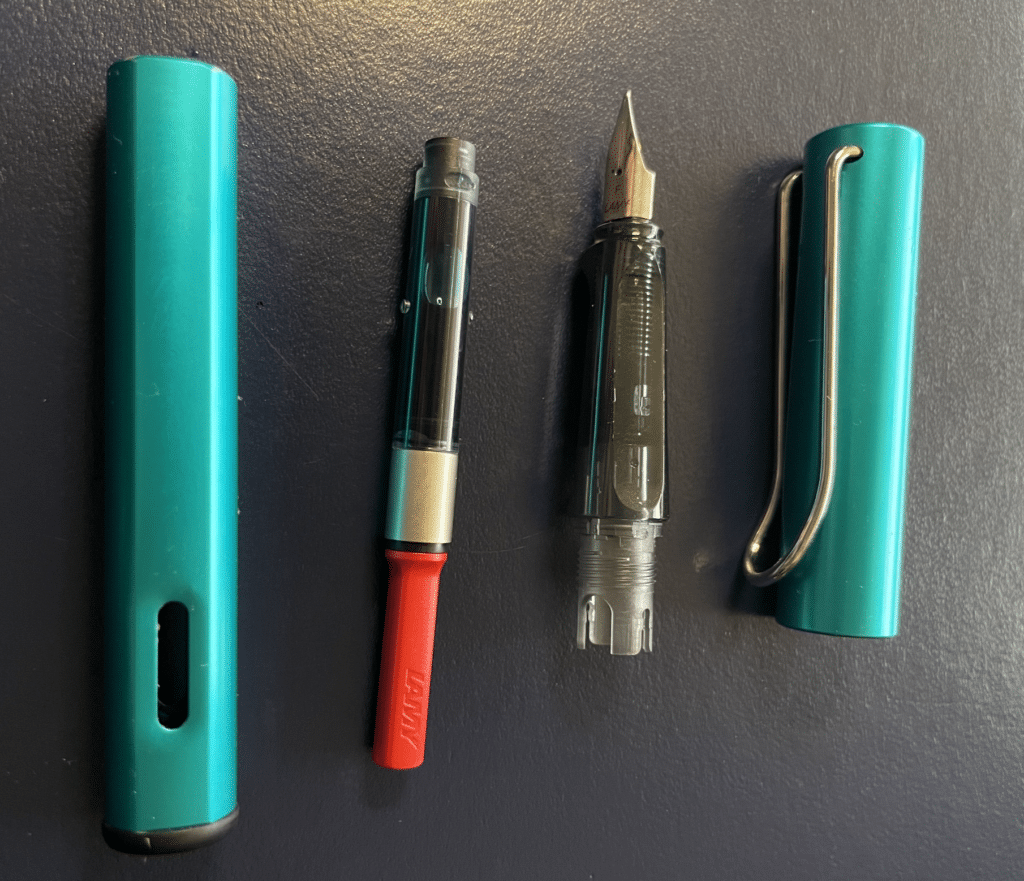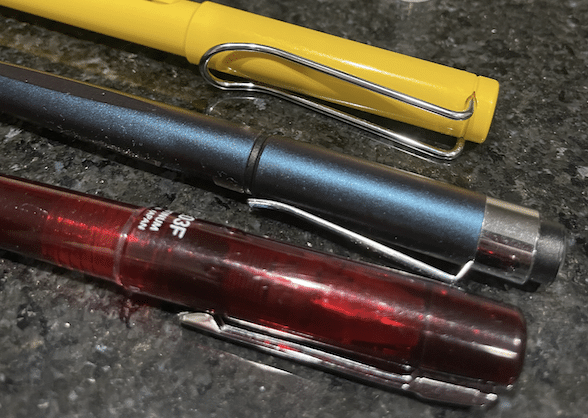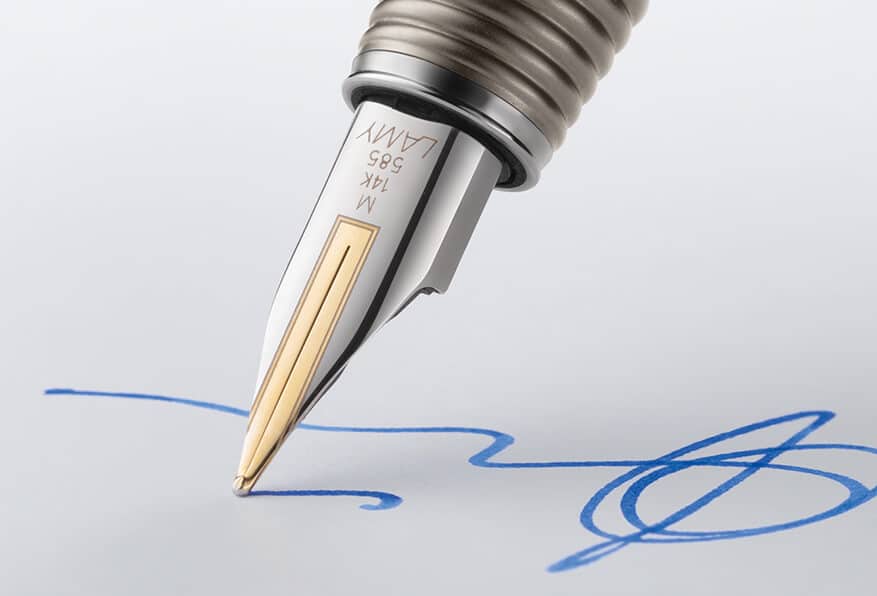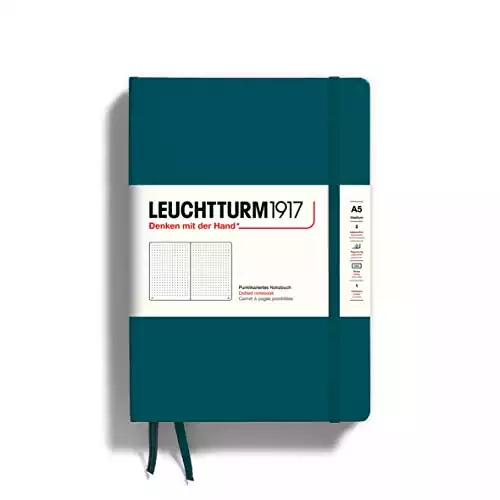I love writing with fountain pens. But, I’d admit, it took me a minute to get used to them.
There’s a little bit of a learning curve when it comes to these pens — it’s not as easy as swapping out a Bic with a Lamy and calling it a day (no offense, Bic).
And even within different types of fountain pens, there are little tweaks you may need to make to get the best experience.
But if you’re new to pens and want to improve your writing technique, I’ve got you covered. Here are some of my best tips for learning how t write with a fountain pen.
Let’s dive in!
Get to know the parts of your fountain pen
Understanding the various components of a fountain pen is essential for writing effectively. You need to know how a fountain pen works to get the most of out it.

Here are the main parts of a fountain pen:
- Nib This is the metal tip that comes into contact with the paper. It’s usually made of gold, steel, or other alloys and is available in various sizes and styles.
- Feed. Located beneath the nib, the feed controls the flow of ink from the ink reservoir to the nib.
- Barrel. This is the main body of the pen, which houses the ink reservoir and provides a comfortable grip for writing.
- Ink Reservoir. The ink reservoir stores the ink, either in a cartridge, converter, or built-in filling system.
Choosing the right fountain pen
Picking the perfect fountain pen is a personal decision. There’s a lot that goes into it, especially because pens come in all shapes, sizes, operating systems, and designs. Factors like size, weight, and ink system all play a role.
So while it may take a bit of trial and error (and spending a few hours at your local pen shop), it’s worth it to figure out your preferences.

Here are some aspects to consider:
- Size and Weight. Choose a pen that feels comfortable in your hand, not too heavy or too light. This will help you maintain control and reduce fatigue during extended writing sessions.
- Nib Type. Nibs come in various sizes (extra-fine, fine, medium, and broad) and styles (italic, stub, flex). Your choice will depend on your writing style and preferences.
- Ink System. Fountain pens use cartridges, converters, or built-in filling systems (piston, vacuum, or eyedropper). Consider which system best suits your needs and ease of use.
- Design. Let’s face it; most people are first attracted to a fountain pen because it looks cool so design matters to a lot of people.
I tend to stick with medium-weight pens with fine nibs and converter ink systems. But that’s taken some time to figure out.
Download this cheatsheet and get expert solutions for the 13 most common pen problems.
Get The FREE CheatsheetPrepare your fountain pen for writing
Hold your horses. Before you start writing, there are a few things to dig into.
- Clean the Nib. New pens often have residue from the manufacturing process, which can affect ink flow. Gently clean the nib with a soft cloth or rinse it under lukewarm water before use.
- Fill with Ink. Depending on your pen’s ink system, fill the ink reservoir according to the manufacturer’s instructions.
- Get the right paper. You can’t use any old paper with your fountain pen. For the best experience, invest in better paper.
How to hold a fountain pen
Holding a fountain pen differs from using a ballpoint or rollerball pen. This is where a lot of people get into trouble, myself included.
I tend to grip a pen hard. And while that’s fine for a ballpoint pen, it makes for a crappy experience writing with a fountain pen.

So start by gripping the pen between your thumb and index finger, resting on your middle finger. Ensure the nib’s top faces upwards and the feed is in contact with the paper.
Keep a relaxed grip to prevent cramping and allow for smooth writing. If you find the nib is scratching the paper, chances are you’re holding your pen too hard.
Also, practice changing the angle you write with. Depending on the width of your nib, you can build a really cool style of penmanship.
Writing techniques
To write effectively with a fountain pen, keep the following techniques in mind:
- Writing Pressure. Fountain pens require minimal pressure. Use the weight of the pen to glide across the paper. Excessive force can damage the nib or cause ink flow issues.
- Writing Angle. Hold the pen at a 40-55° angle to the paper. This position allows for optimal ink flow and a smooth writing experience.
- Direction and Speed. Move your hand and pen in a fluid motion, maintaining a consistent speed. This helps prevent ink blots and improves your writing’s overall appearance.
Explore fountain pen inks
Fountain pen inks play a vital role in your writing experience. Plus, experimenting with different inks adds to the fun of writing.
Here’s what you need to know:
- Ink Types. Inks come in various colors, properties, and formulations. Standard, water-based inks are the most common, while waterproof and iron-gall inks offer more permanence. Choose an ink that complements your writing needs and pen compatibility.
- Ink Maintenance. To prevent clogging and maintain optimal performance, clean your pen regularly, especially when switching ink colors or brands.
I use a little blank notebook to keep track of the various ink samples I use.
Choose the right paper
The right paper can enhance your fountain pen experience. Look for paper that is fountain pen friendly, with a smooth surface and minimal feathering, bleeding, or show-through. Brands like Rhodia and Tomoe River offer high-quality options.
I frequently use a Leuchtturm1917 notebook for most of my day-to-day writing.
This is my notebook of choice. I love my 1917 and have been using them for years.
Troubleshooting common issues
Fountain pen users may encounter occasional issues. Most problems usually come down to two main culprits:
- Ink Flow Problems. If your pen skips or has inconsistent ink flow, clean the nib and feed with water or a pen cleaning solution. Alternatively, try a different ink or paper type.
- Nib Issues. If the nib feels scratchy or catches on the paper, check for misalignment or damage. You may need to adjust the nib or consult a professional for repair.
Cleaning and maintenance
Proper care ensures the longevity of your fountain pen. Clean your pen every 4-8 weeks or when changing inks. Disassemble the pen according to the manufacturer’s instructions, flush the nib and feed with water, and allow it to dry before reassembling.
Start writing
Now you know the basics of how to write with a fountain pen, it’s time to start. So what are you waiting for? Grab a pen and experiment.
FAQs
How often should I clean my fountain pen?
Clean your pen every 4-8 weeks, or when changing ink colors or brands to maintain optimal performance.
What is the best paper for fountain pens?
Choose fountain pen-friendly paper with a smooth surface and minimal feathering, bleeding, or show-through. Brands like Rhodia, Clairefontaine, and Tomoe River are popular choices.
Can I use any ink in my fountain pen?
Use fountain pen-specific inks, as they are formulated for compatibility and optimal performance. Avoid India ink, calligraphy ink, or other inks not designed for fountain pens, as they can clog or damage the pen.
Why is my fountain pen skipping?
Skipping can be caused by several factors, such as clogged ink channels, misaligned nibs, or low-quality paper. Clean your pen, adjust the nib if necessary, or try different paper to resolve the issue.
Can I travel with a fountain pen?
Yes, but take precautions to avoid ink leakage due to changes in air pressure. Travel with your pen stored nib-up or empty and carry extra cartridges or a small ink bottle for refilling as needed. Using a pen with a secure cap and a reliable ink-sealing mechanism can also help prevent leaks during travel.
Liz
Hey, I'm Liz. I'm the founder of this thing. Pen-obsessed and a notebook nut, I love writing by hand. So I'm gonna talk about it on a computer.Download this cheatsheet and get expert solutions for the 13 most common pen problems.
Get The FREE Cheatsheet
